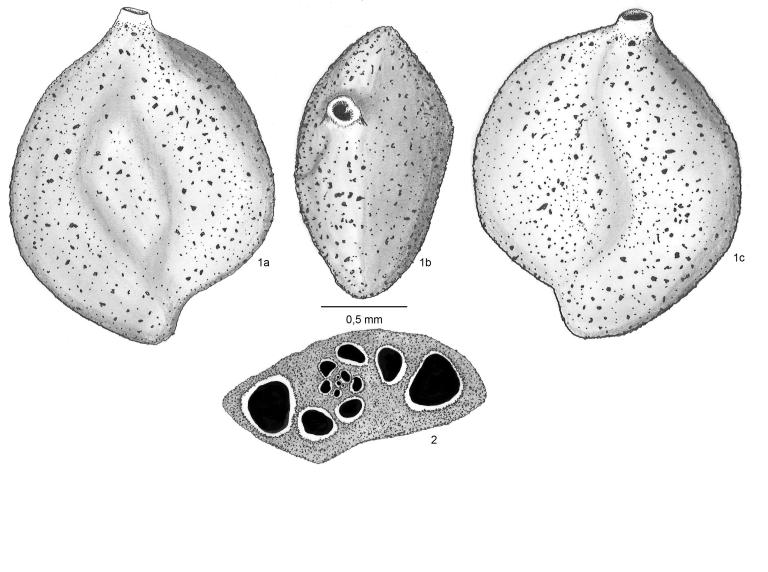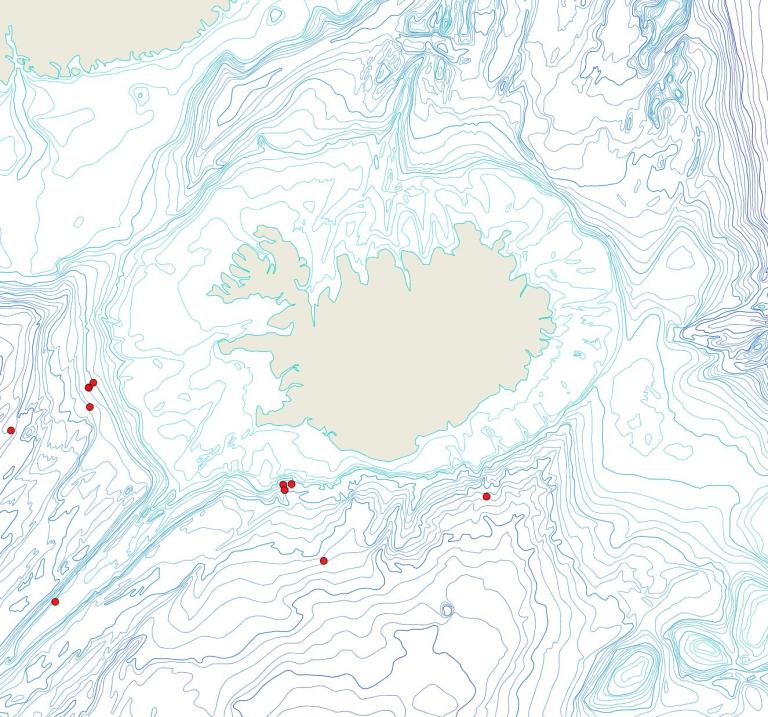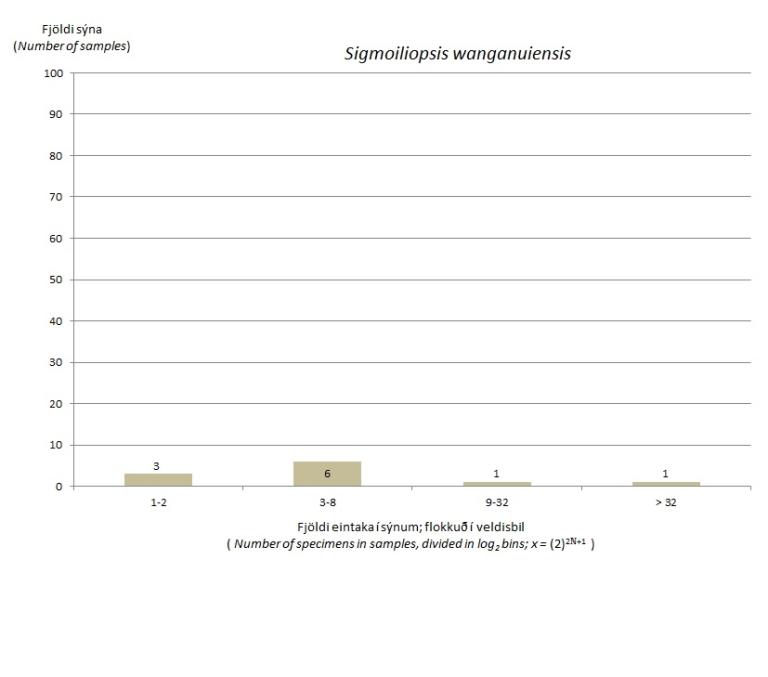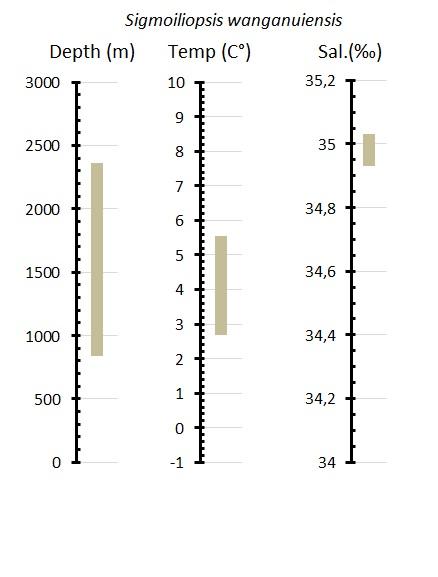
Almennt
Sigmoilopsis wanganuiensis Vella, 1957
Sigmoilopsis wanganuiensis Vella, P. 1957 – Part 1. Foraminifera from the Cook Strait. Studies in New Zealand Foraminifera. New Zealand Geological Survey, Pal. Bull. no. 1, Wellington.
Description: Test is compressed and somewhat oval in side view, length nearly 1,3 times the width. Chambers elongate, embracing about half a coil in length, slightly inflated at the distal end; sutures are indistinct. Chamber arrangement is sigmoid, i.e. conforming to a duplet of equiangular spirals which rapidly assume increasing heights (widely coiled). The result is that the latest chambers of the largest specimens, approach a planispiral chamber arrangement, resulting in flattened tests. Test wall is porcellaneous and heavily impregnated with sand grains of varying size, but next to the lumen is a thin layer made of calcareous material, nearly free of agglutinated material. Aperture is round, with an indistinct phialine lip and a bar like tooth at the end of a protruding neck, which is almost free of adventitious material. Length of largest specimens is over 3 mm, but most are about 2 mm. The species is not very common in Icelandic waters; the Bioice project yielded 100 specimens in 11 samples.
Remarks: The illustration of the type differs only in that the wall seems composed of coarser sand grains, than in the present material, and a calcareous inner lining of the chamber lumen is not shown in the cross section of the type. The type locality is Castlecliff, Wanganui (Pleistocene) New Zealand, and Cook Strait, New Zealand (Recent).
Diagnosis: This species differs from Sigmoilopsis schlumbergeri in being much larger, has thicker and coarser agglutinating layer; tests are flatter and more ovate in side view.
gg@ni.is
Útbreiðslukort

Myndir


Biota
- Tegund (Species)
- (Sigmoilopsis wanganuiensis)